Reports
03.25.14
Urban China
World Bank
This report recommends that China curb rapid urban sprawl by reforming land requisition, give migrants urban residency and equal access to basic public services, and reform local finances by finding stable revenues and by allowing local governments...
Reports
06.01.13
Expanding Social Insurance Coverage in Urban China
World Bank
This paper first reviews the history of social insurance policy and coverage in urban China, documenting the evolution in the coverage of pensions and medical and unemployment insurance for both local residents and migrants, and highlighting...
Reports
06.01.13
Inequality in China
World Bank
This paper provides an overview of research on income inequality in China over the period of economic reform. It presents the results of two main sources of evidence on income inequality and, assisted by various decompositions, explains the reasons...
Reports
05.01.13
A Changing China: Implications for Developing Countries
World Bank
Three decades of rapid growth and structural change have transformed China into an upper-middle-income country and global economic powerhouse. China’s transformations over this period wielded increasing influence over the development path of...
Reports
03.27.13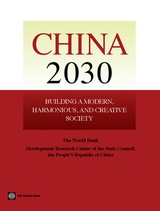
China 2030: Building a Modern, Harmonious, and Creative Society
World Bank
Can China’s growth rate still be among the highest in the world even if it slows from its current pace? And can it maintain this rapid growth with little disruption to the world, the environment, and the fabric of its own society? This report...
Reports
05.03.12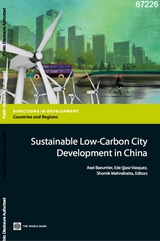
Sustainable Low Carbon City Development in China
World Bank
By embarking on a low-carbon growth path, China’s cities can help reach the country’s targets for reducing the energy and carbon intensity of its economy, and become more livable, efficient, competitive, and ultimately sustainable. Cities contribute...
Reports
09.28.11
Market Integration in China
World Bank
Over the last three decades, China’s product, labor, and capital markets have become gradually more integrated within its borders, although integration has been significantly slower for capital markets. There remains a significant urban-rural...
Reports
09.28.11
Growth Poles and Multipolarity
World Bank
This paper develops an empirical measure of growth poles and uses it to examine the phenomenon of multipolarity. The authors formally define several alternative measures, provide theoretical justifications for these measures, and compute polarity...
Reports
08.01.11
Measuring the Economic Gain of Investing in Girls
World Bank
This report discusses the economic impact of the exclusion of girls from productive employment in developing countries. The paper explores the linkages between investing in girls and potential increases in national income by examining three widely...
Reports
07.26.11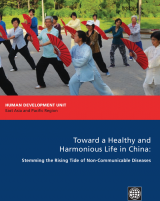
Toward a Healthy and Harmonious Life in China
World Bank
China’s 12th five-year plan (2011-2015) aims to promote inclusive, equitable growth and development by placing an increased emphasis on human development. Good health is an important component of human development, not only because it makes people’s...
Reports
06.01.11
Sustainability Reporting Guidelines: Mapping and Gap Analysis for Shanghai Stock Exchange
World Bank
In recent years the number of companies releasing sustainability reports has continued to increase on a global level as well as in China specifically. In China, the number of sustainability reports reached over 700 in 2010. There is a widely...
Reports
04.01.11
The China New Energy Vehicles Program: Challenges and Opportunities
World Bank
In June 2010, the World Bank organized a team of international experts in urban transport, electric vehicle technologies, and policy and environment to carry out a survey study of China’s New Energy Vehicle (NEV) Program. The preliminary findings of...
Reports
04.01.11
Diagnosing Development Bottlenecks: China and India
World Bank
Although it had a a lower income level than India in 1980, China’s 2006 per capita gross domestic product stood more than twice that of India’s. This paper investigates the role of the business environment in explaining China’s...
Reports
03.11.11
Environmental and Social Impact Assessment: Urumqi District Heating Project
World Bank
The city of Urumqi, the capital of Xinjiang Uygur Autonomous Region in westernmost China, is experiencing rapid urbanization and economic growth, which poses challenges to Urumqi Municipal Government in providing adequate and efficient public...
Reports
03.01.11
How Do Special Economic Zones and Industrial Clusters Drive China’s Rapid Development?
World Bank
In the past thirty years, China has achieved phenomenal economic growth, an unprecedented development “miracle” in human history. How did China achieve this rapid growth? What have been its key drivers? And, most important, what can be learned from...
Reports
01.01.11
Equity and Public Governance in Health System Reform: Challenges and Opportunities for China
Sara Segal-Williams
World Bank
Achieving the objective of China’s current health system reform, namely equitable improvements in health outcomes, will be difficult not least because of the continuously growing income disparities in the country. The analysis in this paper...
Reports
01.01.11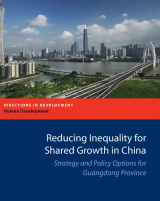
Reducing Inequality for Shared Growth in China: Strategy and Policy Options for Guangdong Province
World Bank
This report is the result of a partnership of the World Bank and the Guangdong provincial government to assess economic and regional inequality in Guangdong. It defines three major types of inequality: Absolute poverty, Inequality of Opportunity,...
Reports
01.01.11
Early Childhood Development and Education in China: Breaking the Cycle of Poverty and Improving Future Competitiveness
World Bank
Given China’s goal to develop a harmonious society and to improve the competitiveness of its future workforce in order to overcome the challenges of an aging population and move toward a high-income society, there is an urgent need to identify...
Reports
12.01.10
The Role of Trade Costs in Global Production Networks: Evidence from China’s Processing Trade Regime
World Bank
This paper uses data from China’s processing trade regime to analyze the role of trade costs on trade within global production networks (GPNs). Under this regime, firms are granted duty exemptions on imported inputs as long as they are used...
Reports
12.01.10
Can China’s Rural Elderly Count on Support from Adult Children? Implications of Rural to Urban Migration
World Bank
Support from the family continues to be an important source of support for the rural elderly, particularly the rural elderly over seventy years of age. Decline in likelihood of co-residence with, or in close proximity to, adult children raises the...
Reports
12.01.10
Catastrophe Insurance Policy for China
World Bank
The vast majority of China’s population lies to the southeast of a line running from Beijing to Sichuan. This entire region is subjected to major floods each year, while typhoons affect the southern and eastern coastal areas and major...
Reports
11.01.10
Did Higher Inequality Impede Growth in Rural China?
World Bank
Since the start of economic reform in the early 1980s, China has experienced plenty of growth and inequality; per capita income has grown nearly 8 percent annually, while the Gini coefficient rose from 0.28 to 0.39. Using a rich longitudinal survey...
Reports
11.01.10
On the Road to Prosperity? The Economic Geography of China’s National Expressway Network
World Bank
Over the past two decades, China has embarked on an ambitious program of expressway network expansion. By facilitating market integration, this program aims both to promote efficiency at the national level and to contribute to the catch-up of...
Reports
05.05.10
Restructuring Paper on a Proposed Project Restructuring of Jiangxi Integrated Agricultural Modernization Project
Sara Segal-Williams
World Bank
The development objective of the Jiangxi Integrated Agricultural Modernization Project (JIAMP) for China is to improve the livelihood of the farmers in the project areas through establishment of integrated, sustainable, and market-driven...
Reports
06.17.09
Report on the Tri-Provincial and Hubei-Xiaogan-Xiangfan Highway Projects
World Bank
This is a report on the performance of two highway projects in China which were financed by a loan from the World Bank. The Tri-Provincial Highway Project, which links Gansu, Ningxi, and Inner Mongolia, and the Hubei-Xiaogan-Xiangfan Highway Project...
Reports
04.29.09
Implementation Completion and Results Report: Health IX Project
World Bank
China’s significant health gains during the 1960s and 1970s earned worldwide recognition. Following onset of economic reforms in the 1980s, however, the primary health care system was weakened, reducing access to both curative and preventive...
Reports
01.01.09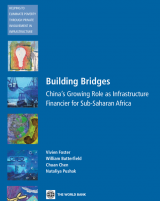
Building Bridges: China’s Growing Role as Infrastructure Financier for Sub-Saharan Africa
World Bank
Over the last decade Chinese investment in Africa has grown considerably. This includes the financing of large infrastructural projects in many African countries. Although Chinese finance of African infrastructure is important, there is not much...
Reports
12.01.07
Wanjiazhai Water Transfer Project: Key Factors and Assesment
World Bank
China’s impressive economic performance since 1978 with a growth rate of GDP of 9.5 percent per year has been mainly in the industrial and commercial sectors and is concentrated in urban areas; as a result, urban water demand has increased by...



